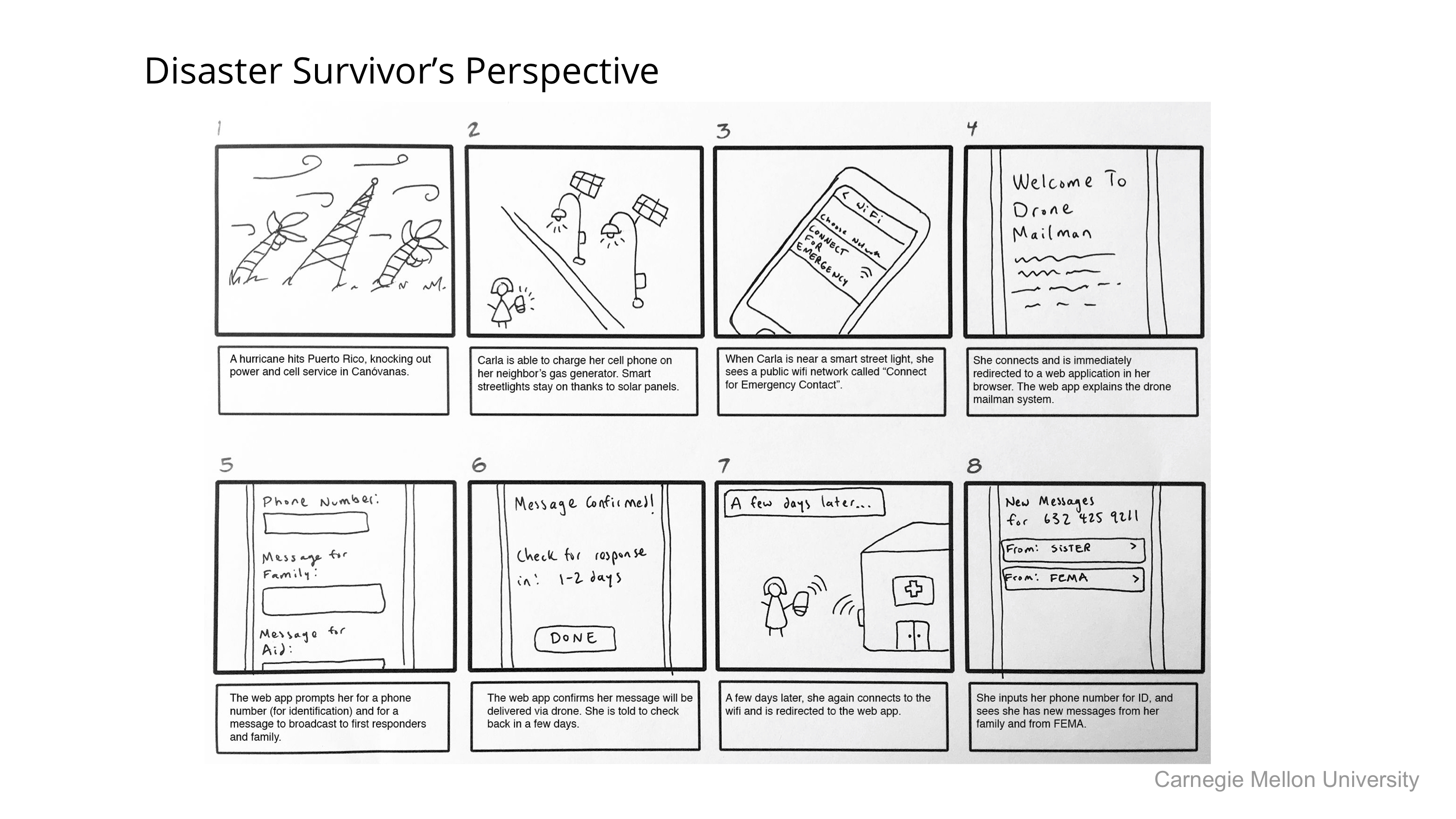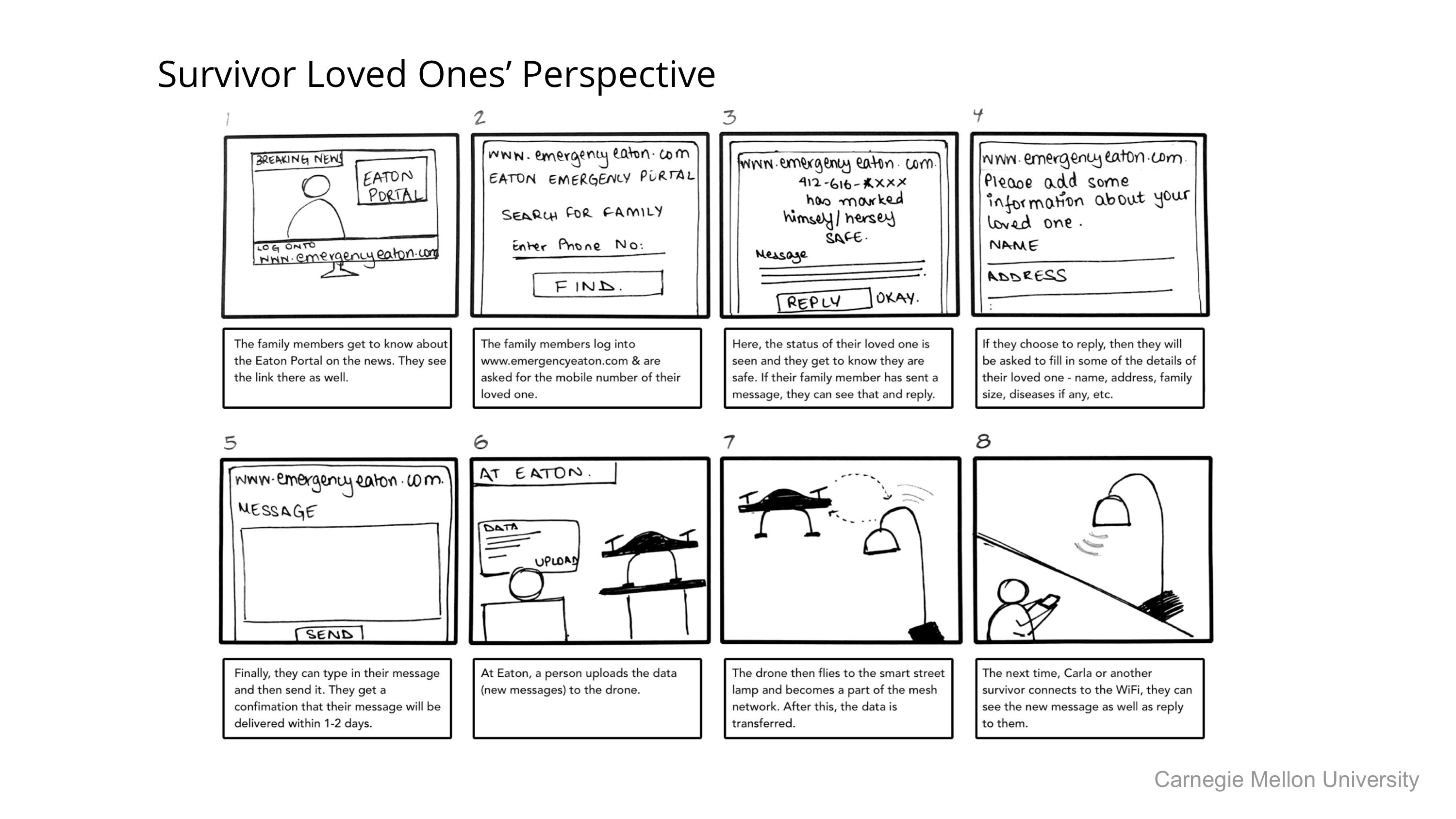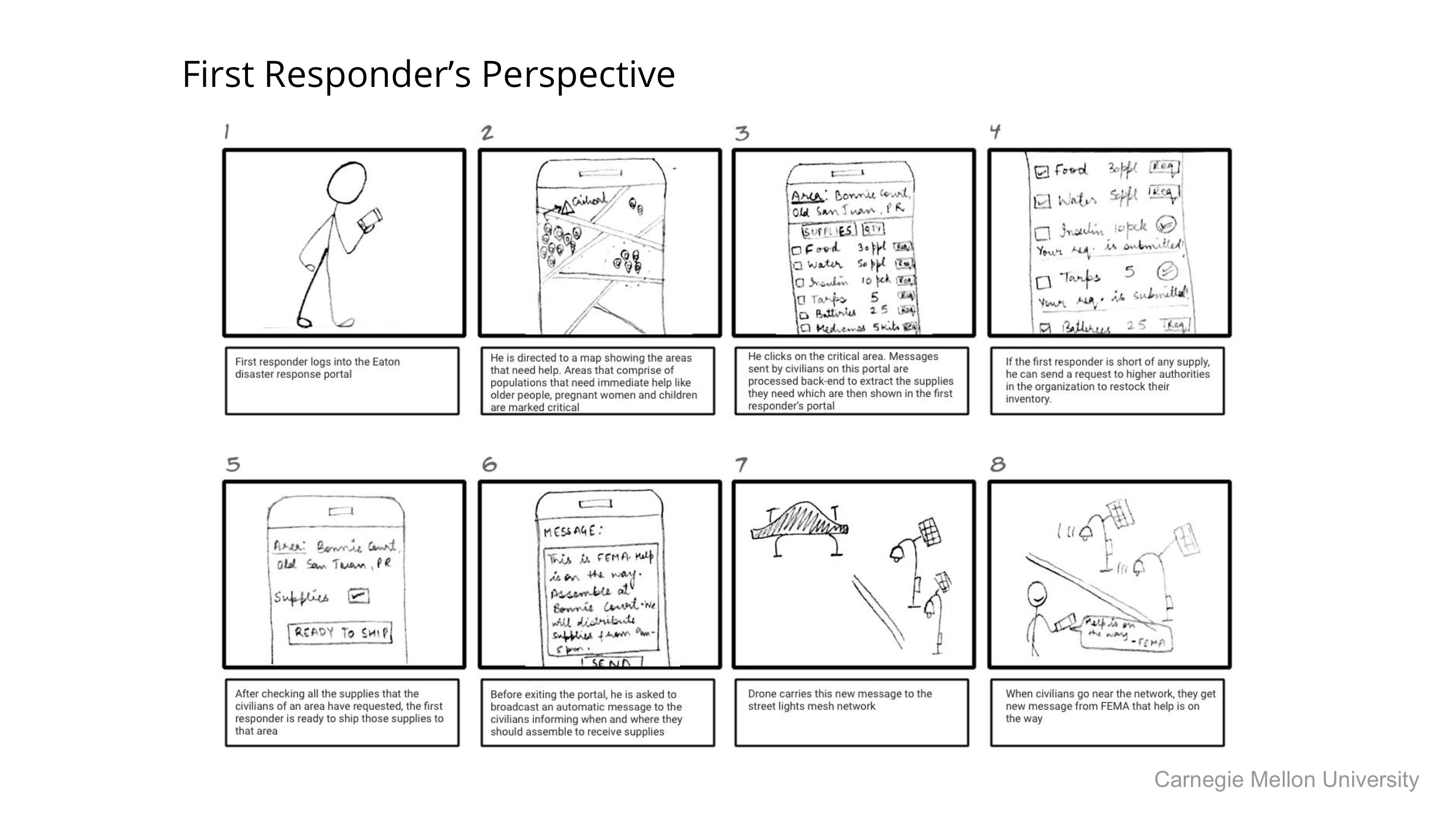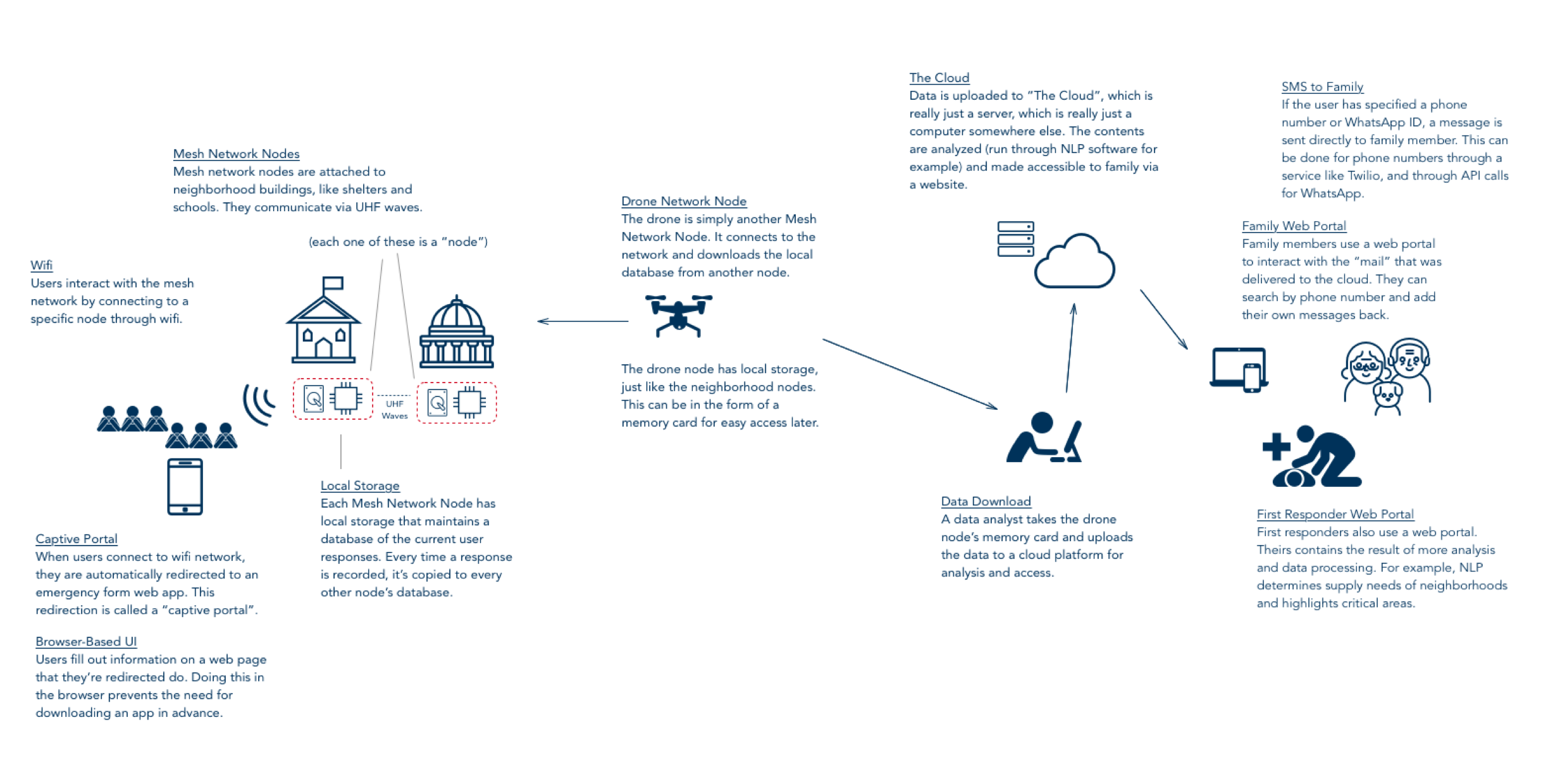High Level Service
We designed a service that uses mesh networking and drones to facilitate communication between survivors, their family, and first responders.
Overview
We combined our two final designs from the conceptual design phase into something that combined features from both. The core interaction was taken from "Drone Mailman", while the data gathering and visualization from "Data Gathering and Visualization" was added as a key feature. Throughout the first part of our design execution phase, we refined the design through stakeholder interviews and user testing.
Eaton Emergency Communication Network (as it was eventually named) consists of a mesh network setup in remote areas to broadcast local wifi to disaster survivors. The mesh creates a local area network, isolated from the greater internet. Survivors can access the wifi to request aid and compose messages to loved ones. These responses are then saved locally. Finally, first responders then send drones out to collect aid requests and messages, where they upload these to the cloud.
Stakeholder Speed Dating
After creating an initial first pass at a fleshed out design, we sought feedback through speed dating-style interviews with stakeholders. These ranged from disaster response professionals to Puerto Rican civilians that had lived through Maria. We wanted to get qualitative feedback, and to understand what parts of the design hit the mark (and which parts didn't).
At the beginning of a Speed Date, we provide interviewees with a few pages of background information about the project, like who we were and our problem statement. Then, we show a diagram of our proposed solution. After eliciting some general feedback about the design, we show them storyboards explaining the three scenarios. These scenarios correspond ot the three user types served by our solution: disaster survivors, survivor's family members, and first responders. We sought strong reactions either way, whether positive or negative.
Some of our speed dating artifacts are below:

The high level design concept

Storyboard for disaster survivors

Storyboard for disaster survivor's family

Storyboard for first responders
Key Insights
Below are the primary takeaways from our rounds of speed-dating:
Family Communication
Disaster management experts and civilian interviewees alike agreed with the characterization of familial communication as an important survivor concern.
Accurate Information
After a disaster, first responders must decide what information is accurate. Aggregated aid requests directly from survivors would help them determine where and when to respond.
Response Coordination
Currently, disaster response organizations share information in an ad-hoc manner: either through word-of-mouth, or sharing spreadsheets through email or in-person.
Response Times
Disaster response teams often gather needs assessment data on the ground, going door-to-door to determine where help is needed. This can be very inefficient, especially if roads are blocked.
Multi-Stakeholder Efforts
Larger organizations such as the Red Cross, UN, and FEMA often coordinate with smaller, more targeted organizations like food banks, religious groups, and local medical responders.
Resilient Buildings
Both disaster experts and hurricane survivors agreed that mesh network nodes should be placed not only on streetlights, but also in resilient buildings like schools, hospitals, and government facilities.
Technical Blueprint
We created a technical blueprint to explain the many moving parts of our design. The underlying components of our design are sometimes confusingly technical, so a clarifying document like this was crucial to get everyone on the same page.

Service Blueprint
A service blueprint shows how each user interacts directly with Eaton, and everything happening backstage both technically and with ECN personnel. This is a classic Service Design artifact, and is incredibly useful for illuminating overlooked parts of the service.

(open image in a new tab for legibility)